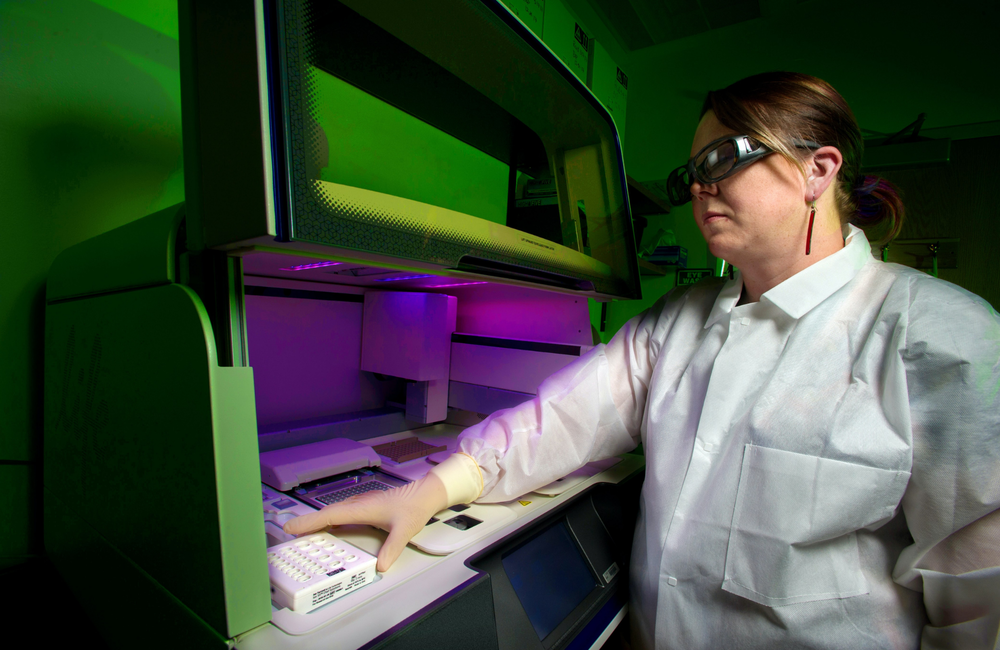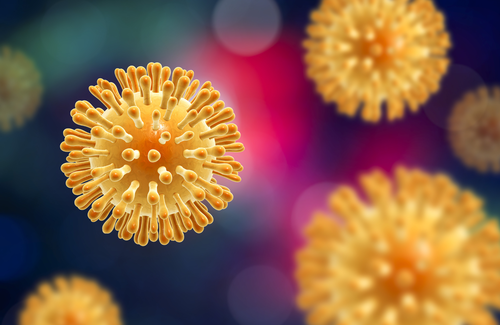
Gene editing with CRISPR/Cas9 can lead to unwanted ‘cuts’ and changes in the gene sequences near to the integrated HIV genes, Dutch researchers report in the Journal of Virology. This might activate host genes that could contribute to cancer development, raising concerns about this potential HIV cure strategy.
Gene editing technologies are expected to revolutionise modern medicine and treatment approaches for many diseases. There are currently several strategies for a potential HIV cure, including gene editing, which is thought to have the potential to permanently remove the virus from most or all bodily cells. Another possibility would be introducing new or modified genes in our cells that make them resistant to the virus. However, there are risks associated with any intervention dealing with our genes.
Some viral and most genetic diseases are perfect candidates for gene editing as they have a well-defined genetic link. In the case of HIV, simply excising (cutting out) the permanently integrated viral genetic material (provirus) from our own genes might seem to be a simple pathway to a lasting cure. However, since the cutting happens in the most essential part of our body – the genome (the totality of our genetic material), even tiny imprecisions may lead to unpredictable health outcomes such as cancer that may manifest later in life. This is one of the reasons for the long safety trials that span up to 15 years for gene editing interventions.
Modern gene editing technologies
Gene editing that is widely available has been a dream for nearly a century, ever since the discovery of genetic material (DNA); however most previous methods were very laborious and imprecise. The discovery of a bacterial mechanism that has evolved to deal with bacterial viruses gave a huge boost to modern gene editing. The so-called CRISPR/Cas9 complex taken from bacteria turned out to have an editing accuracy orders of magnitude greater than any previous approach. In simple terms, the way this ‘machinery’ works is to take a piece of a genetic sequence (template) from an attacking virus and then trace its counterpart inside the bacterium’s own genome. When it finds a corresponding sequence, it cuts out pieces of it making the entire anchored viral genome damaged and dysfunctional.
The machinery can trace the foreign genetic material inside bacterium’s own genes because the DNA exists in a double-stranded form (imagine two strips twisted around each other) and the ‘letter’ sequence of one ‘strip’ perfectly complements the other. So if we cut a piece out of one strip our cells can correctly regenerate the exact missing letter sequence in the other strip. When the template matches a sequence inside the bacterium’s genome, CRISPR/Cas9 knows it needs to cut it out. By giving the editing complex different templates we can make it cut out or even insert any kind of DNA sequence – allowing us to remove viruses, insert protective genes, correct damaged genes, etc.
Another way of inserting genes inside our cells is by modifying viruses by removing their disease-causing parts and using their ‘shells’ to help certain gene products get into our cells. This is the so-called ‘viral vector’ method for gene delivery.
The study
The Dutch microbiologists used different kinds of HIV-infected cell types in a laboratory to test whether the gene editing machinery was accurate enough to target only the HIV provirus sequences amidst an ocean of human DNA and whether the ‘cutting’ part was precise enough to not damage nearby DNA sequences of the cell.
They found that the editing machinery was precise in finding the target (the provirus sequences). But the cutting part led to the random removal or addition of DNA sequences in the neighbouring non-viral regions surrounding the proviral sequence. This would directly translate into changes in the DNA of the person being treated with gene editing.
Using additional laboratory approaches, they were also able to establish the source of these unwanted DNA changes. It turned out that it was not the ‘editing machinery’ that was directly changing and damaging these neighbouring DNA sequences, but the DNA repair process of the cells itself.
The editing machinery leads to the formation of a cut in both strands of the DNA molecule in order to introduce the damaged sequences into the target (the proviral sequence). A double-strand break is one of the strongest alarm bells in a cell for danger and the cell has many mechanisms in place to quickly correct the break and join both ends of the double-stranded DNA molecule. Some of the mechanisms are very efficient and lead to a complete and very accurate repair, while others can compromise the accuracy of the repair.
In this case, the cells used a less efficient way of repairing DNA. Thisseems to be the cause of these removed or added incorrect sequences.
In our DNA we have genes which have the potential to cause or facilitate cancer (proto-oncogenes) too. Because HIV lodges itself into random places in our genes, it is possible that there will be a provirus next to a proto-oncogene. Usually these proto-oncogenes are ‘silenced’ so that they do not do anything; however, if the above process of adding or removing DNA sequences while using gene therapy happens next to a proto-oncogene, it is possible that it will be activated. This is among the concerns the researchers highlighted in their paper and may be a direct or indirect consequence of gene editing.
Potential and risks of gene editing
Currently there are dozens of trials using gene therapies for many diseases, including the Excision BioTherpeutics trial for an HIV cure in phase I/IIa study testing for efficacy and safety. The trial uses the exact same gene editing technology described in this article.
"The editing machinery is precise in finding its target, but the DNA repair process seems to be inefficient."
American Gene Technologies are also working on a gene therapy in phase I for an HIV cure. However in their case they are using viral vectors to make the immune cells resistant to the virus. They take a relatively small number of cells, modify them with the vector, grow them and deliver them back in the body. Hence, it may be assumed that it is less risky as they do not use gene editing with CRISPR/Cas9 and they also work with only a limited number of cells outside the body.
So far there have been major breakthroughs such as a cure for Bubble Boy disease – a genetic immunodeficiency disorder that often leads to death in infancy as the immune system is incapable of fighting any infections. There are ongoing trials using gene editing against muscle dystrophy and even cancer. Hence, the potential is very real, but what about the risks?
Medical interventions of any kind always involve weighing up risks and benefits; surely a zero-risk intervention does not exist. In some cases, such as a terminal cancer or a genetic disease such as Bubble Boy disease it is easier to see that the benefit may dramatically outweigh any associated risks. However, in the case of a condition like HIV, where most people can live relatively normally taking their treatment, the balance of risks and benefits is different.
Concluding thoughts
Gene editing using CRISPR/Cas9 is relatively new and both its efficacy and its risks are yet to be fully explored. The findings from this study show that the editing machinery is precise in finding its target, but the DNA repair process following the editing seems to be inefficient. This may lead to changes in our DNA (mutations) that can potentially increase the risk of diseases, particularly cancer later in life.
However, we have to bear in mind that these findings are from cell cultures outside the body which may not tell us the complete story. In one way, these effects could be even more dramatic as our bodies have hundreds of thousands of times more cells, hence more error-making potential. However, in a system, cells often behave differently compared to a lab dish, so they may be more efficient in DNA repair.
Besides, it is known that some viral infections including HIV increase the risk of cancers themselves, so it's possible that the risk of cancer would be greater if HIV was left uncured.
Gene therapy is a very broad term and there are more and more modalities, approaches and technologies emerging in this field. While this article covers only recent findings about CRISPR/Cas9, it does not generalise the risk profile to other approaches. In any case, we do not even know whether any gene therapy approach can lead to a lasting HIV cure; that is to say, a lot more research is needed to clarify all these questions before any conclusion can be drawn.
Disclaimer: Many genetics concepts may have been simplified in this article in order to make the information more accessible.
Liu Y. et al. CRISPR-Cas attack of HIV-1 proviral DNA can cause unintended deletion of surrounding cellular DNA. Journal of Virology, online ahead of print, 20 November 2023.

